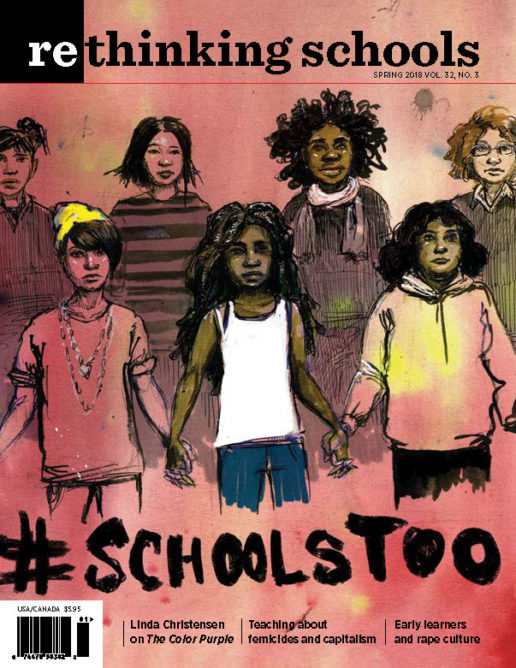Our picks for books, videos, websites, and other social justice education resources 32.3
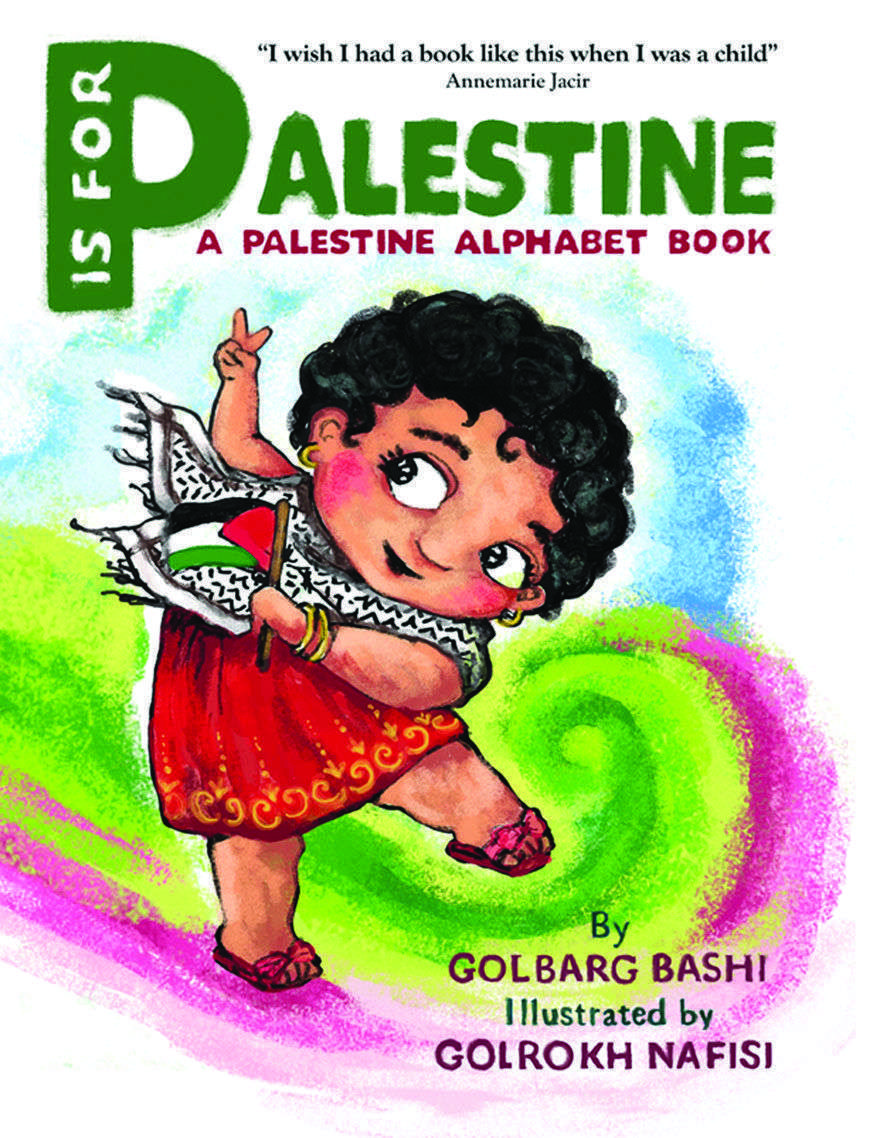
Curriculum
Exploring World History and Current Events with David Rovics
A Musical Teaching Aid
davidrovics.com/history/

The radical troubadour David Rovics has organized many of his songs into themed teaching modules, adding commentary and context. Fifteen modules include 10 to 15 entries on different events, each including a song, along with written reflections. David Rovics sings people’s history to life. His songs can be funny, poignant, or outrageous, but they never fail to inform and inspire. These provide a brilliant soundtrack for educators who seek to nurture students’ empathy — to bring them closer to the people whose lives we seek to illuminate in our classes.
***
Iep Jaltok: Poems from a Marshallese Daughter
by Kathy Jetñil-Kijiner
(University of Arizona Press, 2017)

Remarkably, Iep Jaltok is the first book ever published by a writer from the Marshall Islands — the 29 atolls and five islands that the U.S. government thought would make swell testing grounds for nuclear weapons in the 1940s and 1950s. The United States tested 67 nuclear weapons in the Marshalls, including the 1954 Castle Bravo test on Bikini Atoll, 1,000 times more powerful than the atomic bomb dropped on Hiroshima. The Marshalls are now ground zero for a different kind of colonial invasion — this time of rising seas and king tides, products of “development,” of climate change. In her poetry, Kathy Jetñil-Kijiner (see “Climate Change, Gender, and Nuclear Bombs,” p. 61) confronts the intersection of colonialism, nuclear testing, climate change, and resistance. Her work is beautifully and painfully accessible to middle and high school students. See “History Project,” “Fishbone Hair,” “Lessons from Hawaii,” “To Laura Ingalls Wilder,” “Dear Matafele Peinam,” “Two Degrees,” and “Tell Them”:
tell them about the water
how we have seen it rising
flooding across our cemeteries
gushing over the sea walls
and crashing against our homes
tell them what it’s like
to see the entire ocean level with the land
tell them
we are afraid . . .
but most importantly tell them
we don’t want to leave
we’ve never wanted to leave
and that we
are nothing without our islands.
***
Chasing the Harvest: Migrant Workers in California Agriculture
Edited by Gabriel Thompson
(Verso/Voice of Witness, 2017)
319 pp.

One of capitalism’s acts of magic is the supermarket. On any given day, one can walk into Safeway, Kroger, or Whole Foods and find oranges, peppers, avocados, lettuce, apples, and much more, laid out in piles of brilliant color. There are many hidden hands behind the splendor, but perhaps the most hidden of the hidden are those of farmworkers. This book seeks out the humanity behind the harvest. It features interviews with 15 individuals connected to migrant farm labor — some Indigenous, “the invisible of the invisible.” One admirable feature of the interviews is that people are not reduced to their labor; they are moms and students, athletes, and lovers. And the work is not merely described as a catalog of exploitation; farmworkers narrate “the pride in their work, the camaraderie of a crew, the tightknit families, the feeling of deep satisfaction that comes, as [farmworker and organizer] Rosario Pelayo says, from being in ‘a beautiful struggle.'” One way in which white privilege was baked into U.S. society was when Congress excluded domestic and farm work from the National Labor Relations Act. It’s up to us to make sure that the curriculum doesn’t mirror this discrimination.
***
Teacher Background
Loaded: A Disarming History of the Second Amendment
By Roxanne Dunbar-Ortiz
(City Lights, 2018)
228 pp.
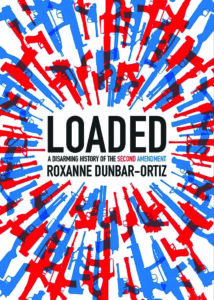
As we seek to develop a curriculum to help students probe the roots of gun violence in the United States, Roxanne Dunbar-Ortiz’s Loaded is a vital resource. Dunbar-Ortiz argues that the right to a “well-regulated militia” enshrined in the Second Amendment has been widely misunderstood and misrepresented. She writes: “The militias referred to in the Second Amendment were a means for white people to eliminate Indigenous communities in order to take their land and for slave patrols to control Black people.” She argues that today’s U.S. “gun culture” can only be understood as the product of the history of white supremacy in the United States.
***
A More Beautiful and Terrible History: The Uses and Misuses of Civil Rights History
By Jeanne Theoharis
(Beacon Press, 2018)
282 pp.

A More Beautiful and Terrible History is a must-read for any teacher of the Civil Rights Movement. Theoharis aims to provide a non-academic, popular historiography that can be used by teachers, students, and activists “to approach the task of racial justice today.” The preface and introduction brilliantly trace the creation of a “civil rights fable” that celebrates “individual courage, missing the collective struggle these victories took and forgoing national accountability by relegating history of inequality to the past.” From outlining the Civil Rights Movement in the North that preceded the Black Power uprisings of the mid-1960s to tracing the key role that young people — especially high school students — played, the nine chapters that follow outline “the histories we need.” The book challenges educators to revamp our curriculum to include a fuller, more critical history of the Civil Rights era.
***
AfricaFocus Bulletin
Edited by William Minter
Archives: africafocus.org
Subscribe: africafocus@igc.org
If you teach about Africa, AfricaFocus Bulletin is an indispensable resource. Edited by longtime scholar and activist William Minter, the biweekly Bulletin compiles valuable articles and commentary on particular themes. Recent issues have focused on migration and refugees, green technology, and global inequality. Classroom-friendly graphics also help students visualize the dynamics described in articles.
***
What Matters: Reflections on Disability, Community and Love
by Janice Fialka
(Dance of Partnership, 2016)
233 pp.
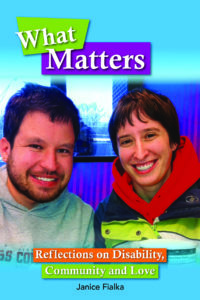
Janice Fialka’s What Matters: Reflections on Disability, Community and Love recounts her three-plus decades of experience raising a son with intellectual disabilities. It can serve as a memorable introduction to the emerging disability movement that asserts that all forms of disability are not deficits, but instead expressions of the variety of ways that humans can exist in the world. Such an assertion challenges unexamined beliefs about normality and requires a shift in how we think about inclusion. Fialka’s story of her son Micah demonstrates the importance of setting high expectations, allowing people with intellectual disabilities to pursue their own dreams, and taking risks within a community of support that values interdependence over independence. This combination of factors has allowed a person initially slated for institutionalization to become a teacher in courses about special education at Syracuse University and a social justice activist in his own right. More educators need to embrace the vision of disability presented here.
***
Podcast
Uncivil
Jack Hitt and Chenjerai Kumanyika,
co-hosts
Gimlet Media
https://gimletmedia.com/shows/uncivil

“The Civil War reverberates in both directions — all the way back to the original sin of the country and right up to whatever Trump tweeted yesterday.” So says Jack Hitt, who along with scholar-activist Chenjerai Kumanyika hosts the excellent Civil War history podcast Uncivil. Kumanyika and Hitt are smart and insightful guides who display powerful curiosity about the past and urgency about its relevance. By profiling everyday people whose current circumstances are inextricably tied to the war and its memory, Uncivil makes the past present. In the first episode, “The Raid,” we meet Fallon Greene, a descendant of Pa Shed, who escaped slavery, joined the Union Army, led a daring and successful raid with Harriet Tubman, and eventually bought the very land on which Fallon’s church sits today. In “The Deed,” we meet 83-year-old Nettye Evans, who is fighting in the 21st century to hold on to land her family acquired 150 years ago through General Sherman’s Special Field Order 15. The episodes are miraculous in their brevity (usually about 25 minutes), given the largeness of the history they reveal — perfect for the classroom.
***
Picture Books
Midnight Teacher: Lilly Ann Granderson and Her Secret School
By Janet Halfmann
Illustrated by London Ladd
(Lee & Low Books, 2018)
40 pp.
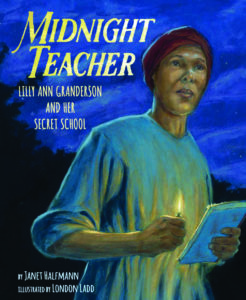
This picture book for mid- to upper-elementary tells the story of Lilly Ann Granderson, an enslaved woman who taught hundreds of people in Kentucky and Mississippi to read. Her schools were held in secrecy and under threat of severe punishment. Readers learn not only about this little-known educator, but also of the profound commitment to education that prevailed among people held in bondage. Her students took what they learned and passed it on to others. The book ends with Emancipation and Granderson continuing to teach — publicly now — during Reconstruction.
***
Mama Africa! How Miriam Makeba Spread Hope with Her Song
By Kathryn Erskine
Illustrated by Charly Palmer
(Farrar Straus & Giroux, 2017)
48 pp.
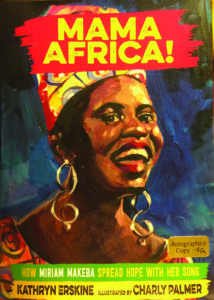
“Music gets inside me and starts to shake things up,” says internationally acclaimed singer Miriam Makeba on the opening page of this picture book about her life. The story shows how her songs shook up the world — first in the fight against apartheid in South Africa and later by mobilizing international support for the anti-apartheid struggle while Makeba lived in exile. Readers learn about key events in South African history such as the jailing of Nelson Mandela and the Soweto Uprising. The story ends with Mandela walking out of prison and Makeba returning home to sing songs of celebration.
***
P Is for Palestine:
A Palestine Alphabet Book
By Golbarg Bashi
Illustrated by Golrokh Nafisi
(Dr. Bashi, 2017)
60 pp.
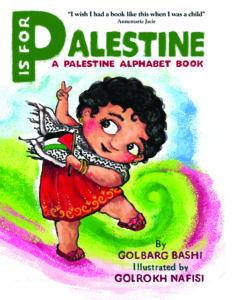
See Palestine through the eyes of a child with this delightfully illustrated alphabet book for young children. The letters introduce family members, places, food, and traditions. It begins with “A is for Arabic, my tongue, a language that’s the fourth largest ever sung.”
***
Graphic Novel
I Am Alfonso Jones
By Tony Medina
Illustrated by Stacey Robinson and John Jennings
(Tu Books, 2017)
176 pp.
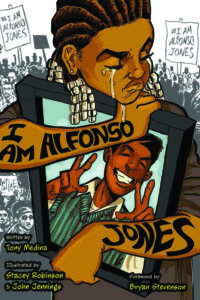
I Am Alfonso Jones provides young readers with a narrative that not only addresses the complexity and history of police brutality, but also discusses climate change, gun control, the criminalization of Black males, the Black Lives Matter movement, youth activism, Afro-Latinidad, and so much more. Alfonso, a New York City teenager attends the prestigious Henry Dumas School of the Arts, a school for gifted youth. While shopping for a suit with his friend Denetta, a police officer, who mistakes a hanger for a weapon, shoots Alfonso. Joined by a train of ancestors, also killed through police violence, Alfonso goes on a journey that illuminates the circumstances of his death and the devastating impact his murder had on his friends and family. Written as a graphic novel, I Am Alfonso Jones can grasp the attention of middle school and high school students alike. Tony Medina’s use of New York slang can help urban youth to see themselves as intellectuals capable of having academic conversations using their own language to discuss literature.

